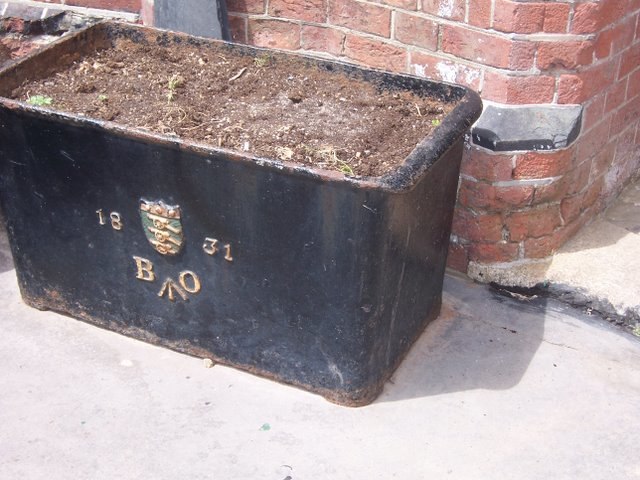The term benchmark, bench mark, or survey benchmark originates from the chiseled horizontal marks that surveyors made in stone structures, into which an angle iron could be placed to form a "bench" for a leveling rod, thus ensuring that a leveling rod could be accurately repositioned in the same place in the future. These marks were usually indicated with a chiseled arrow below the horizontal line. A benchmark is a type of survey marker.
An Ordnance Survey cut mark in the UK
Occasionally a non-vertical face, and a slightly different mark, was used
An Ordnance Survey flush bracket
United States Coast and Geodetic Survey benchmark disk in the United States
A broad arrow, of which a pheon is a variant, is a stylised representation of a metal arrowhead, comprising a tang and two barbs meeting at a point. It is a symbol used traditionally in heraldry, most notably in England, and later by the British government to mark government property. It became particularly associated with the Board of Ordnance, and later the War Department and the Ministry of Defence. It was exported to other parts of the British Empire, where it was used in similar official contexts.
Ammunition box or coal container dated 1831, displaying Board of Ordnance coat of arms, initials and broad arrow
British convicts in uniforms bearing broad arrows: a late 19th-century print
A broad arrow on a Marconi TF1041B valve voltmeter, indicating Ministry of Defence ownership
An Ordnance Survey benchmark in the UK







